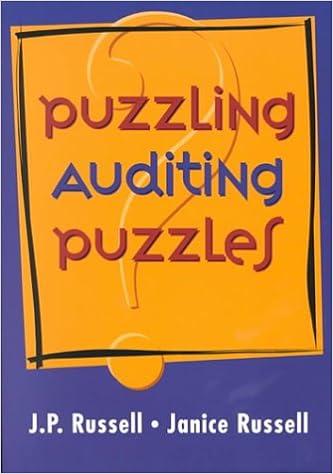Question
[The following information applies to the questions displayed below.] Huron Chalk Company manufactures sidewalk chalk which it sells online by the box at $22 per
[The following information applies to the questions displayed below.]
| Huron Chalk Company manufactures sidewalk chalk which it sells online by the box at $22 per unit. Huron uses an actual costing system, which means that the actual costs of direct material, direct labor, and manufacturing overhead are entered into work-in-process inventory. The actual application rate for manufacturing overhead is computed each year; actual manufacturing overhead is divided by actual production (in units) to compute the application rate. Information for Hurons first two years of operations is as follows: |
| Year 1 | Year 2 | ||||||
| Sales (in units) | 3,100 | 3,100 | |||||
| Production (in units) | 3,600 | 2,600 | |||||
| Production costs: | |||||||
| Variable manufacturing costs | $ | 15,840 | $ | 11,440 | |||
| Fixed manufacturing overhead | 19,440 | 19,440 | |||||
| Selling and administrative expenses: | |||||||
| Variable | 12,400 | 12,400 | |||||
| Fixed | 11,400 | 11,400 | |||||
|
| |||||||
| Selected information from Hurons year-end balance sheets for its first two years of operation is as follows: |
| HURON CHALK COMPANY | ||||||
| Selected Balance Sheet Information | ||||||
| Based on absorption costing | End of Year 1 | End of Year 2 | ||||
| Finished-goods inventory | $ | 4,900 | $ | 0 | ||
| Retained earnings* | 8,520 | 14,440 | ||||
| Based on variable costing | End of Year 1 | End of Year 2 | ||||
| Finished-goods inventory | $ | 2,200 | $ | 0 | ||
| Retained earnings* | 5,820 | 14,440 | ||||
|
| ||||||
| * | For convenience, assume that dividends for Year 1 is $5,500 and Year 2 is $2,700. No taxes or other expenses were incurred for both the years. |
Case 8-44 Absorption and Variable Costing; Effect on the Balance Sheet; Continuation of Preceding Case (LO 8-1, 8-4)
| Required: | |
| 4. | Compute the amount by which the year-end balance in finished-goods inventory declined during year 2 (i.e., between December 31 of year 1 and December 31 of year 2): |
| Using the data from the balance sheet prepared under absorption costing. | |||||
| Using the data from the balance sheet prepared under variable costing.
|
Step by Step Solution
There are 3 Steps involved in it
Step: 1

Get Instant Access to Expert-Tailored Solutions
See step-by-step solutions with expert insights and AI powered tools for academic success
Step: 2

Step: 3

Ace Your Homework with AI
Get the answers you need in no time with our AI-driven, step-by-step assistance
Get Started


